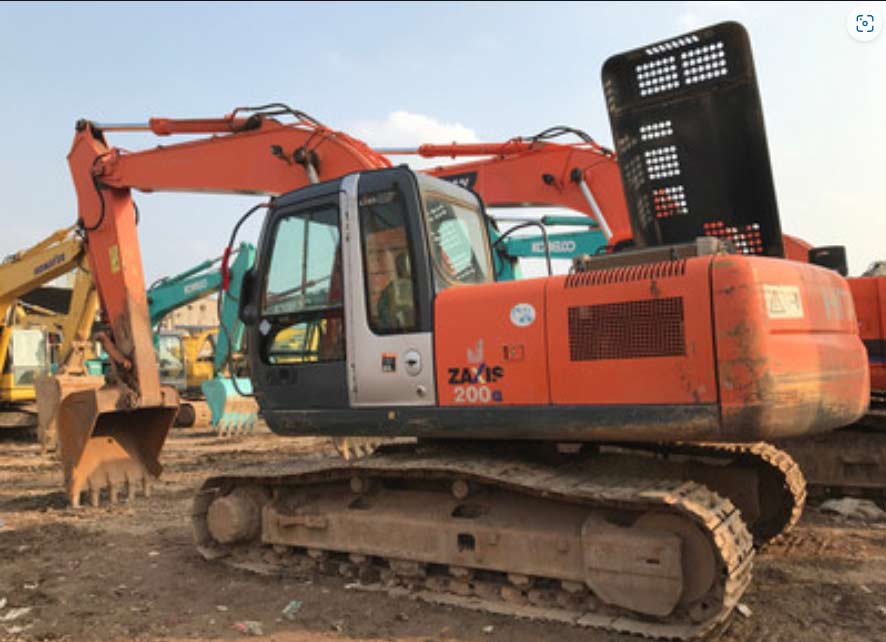
Hitachi excavators are renowned for their reliability and efficiency in heavy-duty construction tasks. However, after extensive use, even the most robust machinery can encounter issues. One common issue faced by the Hitachi ZX330 excavator is the inability to rotate. In this blog post, we will delve into a real-world scenario involving a Hitachi ZX330 excavator with over 15,000 hours of operation that suddenly lost its ability to rotate. We will explore the troubleshooting steps taken, the potential causes identified, and the solutions implemented to resolve the issue.
The Hitachi ZX330 excavator in question exhibited a specific problem: it could not rotate to the left or right at all. However, all other functions of the excavator were operating normally. This initial observation suggested that the main working pump of the excavator was functioning correctly, and the issue was isolated to the rotation mechanism.
To diagnose and resolve the issue efficiently, a systematic approach was adopted, starting from the simplest potential causes to the more complex ones. Here are the detailed steps taken:
Step 1: Pressure Measurement
The first step involved measuring the hydraulic pressure of the pump during rotation. The normal pressure for the rotation function should be around 30 MPa. However, the measured pressure was only 8 MPa, indicating a significant discrepancy. This substantial difference suggested a severe leak in the hydraulic circuit controlling the rotation.
Given the symptoms and initial findings, four potential causes were identified:

Step 2: Checking Pilot Pressure
To rule out low pilot pressure, the pilot oil line of the boom was swapped with the pilot oil line of the rotation mechanism. The rotation handle was then operated to see if the boom’s function was affected. The boom operated normally, indicating that the pilot pressure for the rotation function was normal. This eliminated the first potential cause.
Step 3: Inspecting the Main Control Valve
Next, the main control valve spool was disassembled and inspected for any signs of abnormal wear or sticking. The inspection revealed no issues with the valve spool, ruling out the second potential cause. This indicated that the problem was not with the multi-way valve.
Step 4: Examining the Swing Motor
The focus then shifted to the swing motor, specifically the replenishing valve. Upon inspection, the replenishing valve was found to be in good condition, with no signs of sticking or broken springs. This eliminated the third potential cause.

To further investigate, the rear end cap of the motor was removed, revealing a damaged bearing. This led to the complete disassembly of the motor, which uncovered extensive damage to the distribution plate, slippers, and other components. The swing motor in question was a swashplate-type fixed displacement motor, and the damaged bearing was identified as the primary cause of the motor’s failure. Given the extensive hours of operation, the bearing had exceeded its service life, leading to the motor’s overall damage.
Replacing Damaged Components: The damaged components of the swing motor, including the distribution plate, slippers, and bearings, were replaced. This restored the motor to its proper functioning state.
Regelmæssig vedligeholdelse: This case underscored the importance of regular maintenance, especially for high-load components like hydraulic pumps and motors. Bearings, in particular, should be replaced periodically to prevent such failures. Regular maintenance schedules and checks can help identify wear and tear early, preventing costly downtime and repairs.
The inability of the Hitachi ZX330 excavator to rotate was ultimately traced back to a damaged bearing in the swing motor, leading to extensive internal damage. By systematically troubleshooting the issue, starting with pressure measurements and progressing through potential causes, the issue was effectively diagnosed and resolved. This case highlights the critical importance of regular maintenance and the timely replacement of high-load components to ensure the longevity and reliability of heavy machinery.
I hope this detailed troubleshooting guide helps you in managing similar issues with your excavator. If you have any questions or need further assistance, feel free to reach out!